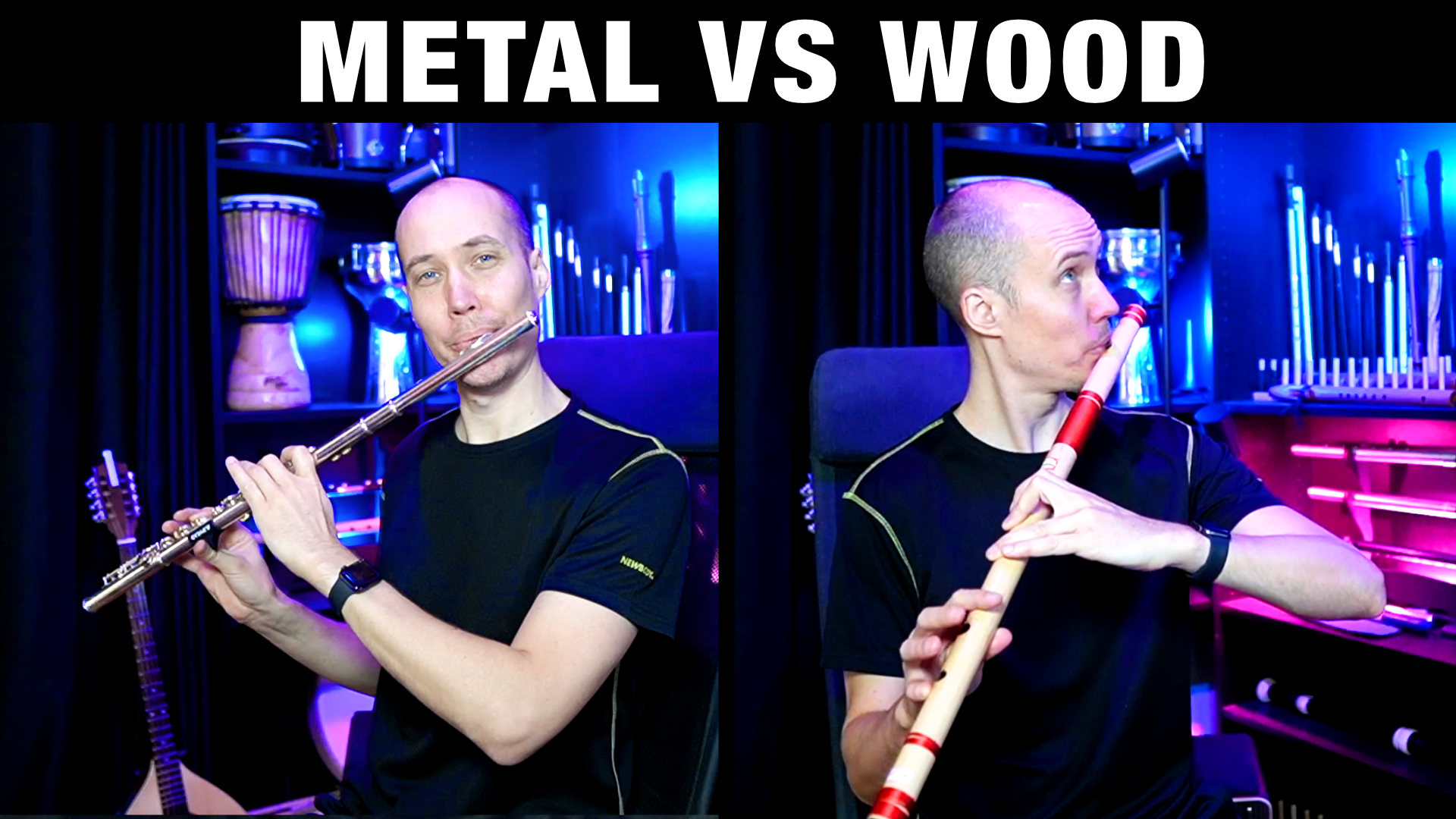 Does the Material of the Flute matter?
Does the Material of the Flute matter?
If you only change the material of the flute body, then no, scientific studies have shown that it makes minimal difference in sound and tone.
What matters is the size of the bore (tube thickness), the size and hole placement, and most importantly: the lip plate material and design.
Bigger Bore = Bigger Sound
The bigger the diameter of the flute body is (called “bore size”) the more rich fundamentals you get, which means a thicker, deeper and warmer tone.
You can hear this clearly by playing a lower key Native American style flute, which has a huge bore size by design. And the tone is indeed very deep and warm.
Sharper Lip Plate = Focused Sound
The main thing that makes the concert flute (Boehm flute) in metal sound both louder and more focused and precise, is the design of the lip plate and embouchure hole.
Metal makes it possible to have a more precise sharp edge where the air is split, which makes it both easier to create the sounds, and makes the final output louder and more focused.
In contrast to this, you will find wooden flutes and bamboo flutes, to have a more soft, mellow and airy (some say “muffled”() tone.
What type of flute is best for a beginner?
If your choice is between a concert (Boehm) metal flute, and a simple system (6 hole) wooden or bamboo flute, I would say the latter is better for beginners.
Even if the embouchure is a bit trickier on wooden and bamboo flutes since they don’t have that nice lip plate over the embouchure hole, the fact is that they are diatonic instruments in most cases due to their 6 tone hole design. And a diatonic instrument is super easy to learn the fingerings on.
But perhaps even more important, is that a decent wooden flute, or bamboo flute like a Bansuri, is a lot cheaper than a Boehm flute. And a whole lot easier to maintain, clean etc.
